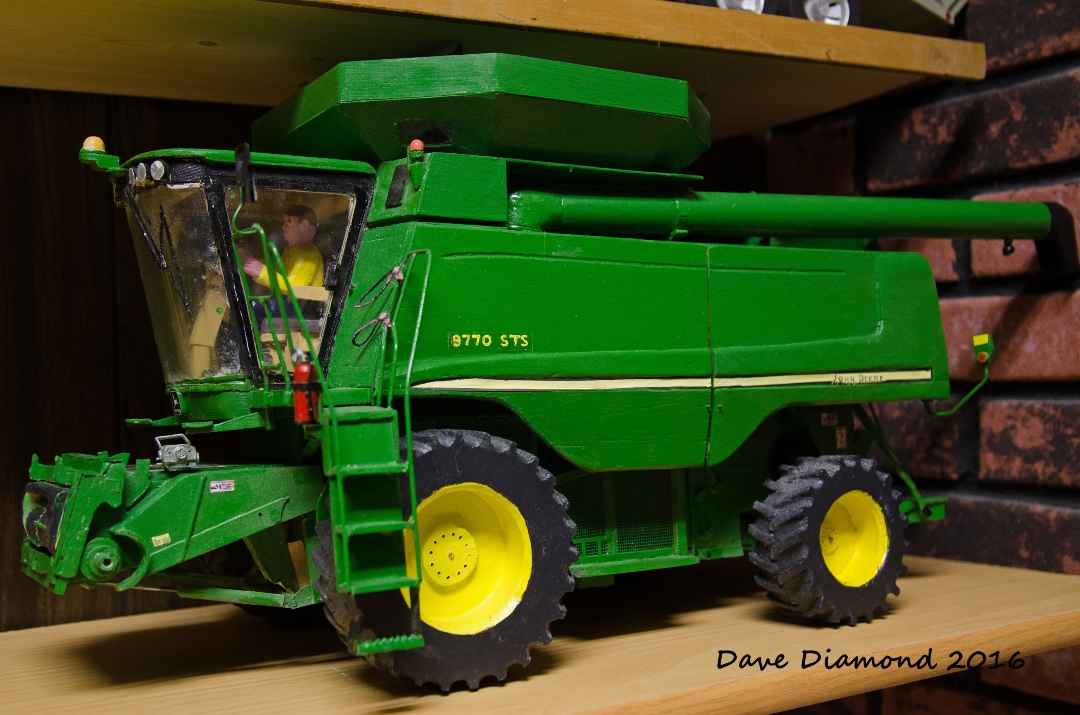Handcrafted Wooden Tractors Celebrate Lifelong Passion
The 96-Year-Old Iowa Artisan Who Brought Tractors to Life
Iowa has long been known for its agriculture industry. It’s also the birthplace of the late Frederick Rohwedder, the inventor of sliced bread. Zoom in on the map to Orange City, Iowa, and you’ll find Jim DeBoer, a local 96-year-old with a special talent — carving intricately detailed model tractors and other farm equipment almost entirely out of wood.
A self-taught woodcarver, Jim’s creations feature intricate details, including moving parts and steering mechanisms. On average, each toy replica took him nearly 80 to 100 hours, sometimes more, to complete.
Jim’s craftsmanship is admired not only in Iowa but beyond. A talent that many might say is “the greatest thing since sliced bread.”
Jim DeBoer’s Story
At age 12, Jim and his family moved from town to a farm, where they purchased a brand-new John Deere B tractor. Jim was responsible for the tractor’s upkeep, changing the oil and handling repairs himself. This sparked his fascination with tractors and other farm machinery.
“We didn’t have too many farm machinery toys at the time, so I started making my own,” he said.
One of the first replicas Jim carved was a spreader — a piece of farm equipment that spreads manure, seeds and other materials. To pull it, he needed a tractor, so he carved one.
Over time, his carving skills improved, allowing him to create extremely detailed, realistic-looking moving parts, including pulleys, gears, swinging drawbars and front wheels that steer.

“I remember the first plow I made. I just took a flat piece of board and put two pieces of tin on the bottom. At that time, the two bottom plows were pretty popular,” he said.
To play with his toy plow, Jim dug a furrow at the end of the field. When the wheels hit the furrow, they’d stop, prompting him to pull the strings to operate the plow.
“I would raise the axle to lift the plow off the ground, and I just pulled the string again when I wanted to plow. I don’t know if it really worked too good, but I had fun making it anyways,” he chuckled.
Jim’s son, Dave DeBoer, said his father has been building and carving model tractors and trucks for as long as he can remember.
“My uncle Cliff once commented that when they were kids, they would take a piece of two-by-four, attach some slices of a tree branch for wheels and pretend it was a toy tractor. He’s come a long way since then,” Dave said.
Jim’s Creative Process
Since he began carving, Jim has handcrafted over 100 models, including 27 tractors, seven combines and five corn pickers.
His creative process was simple: first, he’d visit a farm or dealer to observe a real, life-size tractor or farm equipment. While there, he’d take a few pictures and measurements, then head home to draw it to scale on paper. Next, he’d choose boards from a pile of scrap pinewood and begin the carving process. Each piece of every toy model was made separately and glued together.
From start to finish, one model tractor would take Jim anywhere from 80 to 100 hours to complete. Larger pieces, like his Peterbilt truck and forage harvester, took about 250 hours each.
“Every detail matters,” said Jim. “I try to make them as real and with as many moving parts and details that I can while still keeping them under scale.”
Dave recalls his father’s workshop, saying Jim didn’t need a great deal of space to work on his small-scale models.
“It was a simple workbench,” he reminisced, “some good lighting, a vice to hold things and a wide assortment of hand tools. Somebody introduced him to Dremels a while back, and that soon became one of his favorite tools.”
To create his detailed wooden farm machinery models, Jim mainly used Dremels (a handheld, high-speed rotary tool used for cutting, sanding, grinding, polishing and engraving) a wood file, a coping saw and sandpaper. Occasionally, he’d use nails, wire, tin and even some paper to make the door hinges.
“I remember when Dad came up from the basement with one of his tractors, I think it was a Model A John Deere, and an unpainted manure spreader prototype. He entertained everyone by showing us how the apron and beaters moved and would actually unload a pile of sawdust on the floor. Mom made sure he cleaned that up before going back downstairs,” Dave chuckled.
Tiny Tractors Making a Big Impact
According to Dave, Jim’s work brings joy to many people in Orange City and beyond. Watching his father show his models to others is one of his favorite things to do.
“When they see them from a distance, they all expect them to be toys that were purchased from a retail store,” said Dave. “Then they get closer, and he starts to show them all of the moving parts, and they realize that he actually built them himself. That’s when their eyes get big, and they really begin to appreciate the details in them.”
Jim’s work is highly regarded, with several pieces displayed at the Round Barn in Plymouth County. While he gets a lot of attention at county fairs and vintage tractor shows, Jim also takes a small selection of models to several nursing and retirement homes in his area.
“Those folks get far more excited about the vintage pieces than the newer designs,” said Dave. “They’ll frequently start telling stories about the old tractors and farm equipment that they had worked with over the years. They really seem to enjoy that.”
Dave asked his father once why he was such a fan of John Deere. While it was one of the first tractors that Jim and his father had worked with on the farm, he said simply, “he liked them.”
“No particular reason, he just likes them,” said Dave. “Especially the old Poppin’ Johnnies. Those will always get his attention.”



